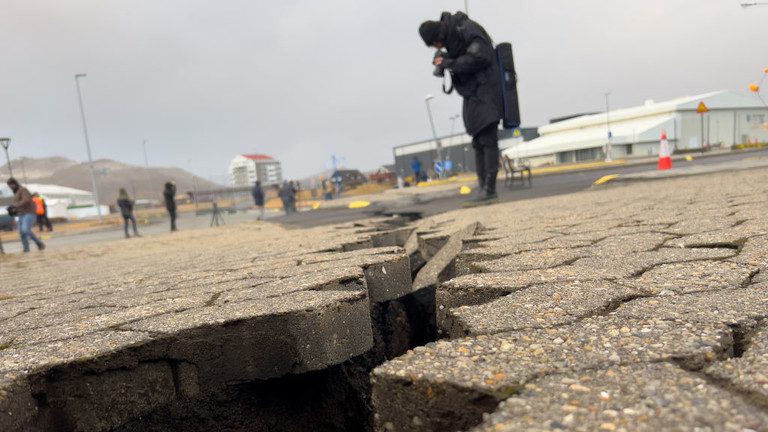World
Iceland faces the threat of volcanic eruption as tremors tear apart its roads

The area around a coastal town that was evacuated earlier this month is still experiencing earthquakes, and Icelandic authorities have issued a warning that a catastrophic volcanic eruption might happen with as little as 30 minutes’ notice.
The Icelandic Meteorological Office (IMO) stated on Wednesday that while an eruption is still deemed “imminent,” there is now less chance that molten lava will explode from a magma tunnel directly beneath Grindavik, the town whose roughly 4,000 residents were forced to evacuate almost two weeks ago. According to the most recent seismic data, the eruption is most likely to happen between Hagafell, which is located further northeast, and Sylingarfell, which is a few miles north of Grindavik.
According to the IMO, “the likelihood of a sudden eruption within the town limits of Grindavik has been decreasing daily and is currently considered low.” “The possibility that the magma in the tunnel beneath Grindavik will unexpectedly break its way to the surface within the town limits is also diminished by the assumption that the magma is partially solidified.”
Scientists have cautioned that the area’s earthquake activity may be slowing down, which could indicate that magma is approaching the earth’s surface and that the anticipated eruption is approaching faster. Approximately 100 earthquakes were registered between midnight and six o’clock on Wednesday, according to the IMO, compared to hundreds of daily tremors earlier in the month. Monitoring of the seismic activity has been hampered by stormy weather and large waves.
Small groups of Grindavik inhabitants have been permitted by emergency officials to return to the town for brief periods of time in order to reclaim some of their things in recent days. On one such excursion last week, a BBC correspondent joined evacuees; however, once significant amounts of sulphur dioxide were discovered, the writer was told to leave Grindavik immediately.
In light of the decreased risk of an eruption inside the city boundaries, Iceland’s Ministry of Civil Protection and Emergency Management let locals to return to their homes between 9 a.m. and 4 p.m. on Thursday. However, it issued a warning that they might have to leave again at “very short notice.”
Situated around 35 miles southwest of Reykjavik, the capital of Iceland, Grindavik is situated on the Reykjanes peninsula. It’s close to the Blue Lagoon, a well-known tourist destination that was closed due to the threat posed by the volcano. Recent weeks have already seen some houses in the town collapse due to earthquakes, and the roadways have large fissures in them.
After being given permission to spend ten minutes at her house on Monday, Andrea Evarsdottir, a resident of Grindavik, told the UK’s Independent newspaper, “Everything just seems so unreal.” It seems as though I’m in a dystopian film. All I want is to get out of this nightmare.
Large clouds of volcanic ash were ejected into the atmosphere by the Eyjafjallajokull volcano in southern Iceland in 2010, disrupting European airline flights more than any other event since World War II.
